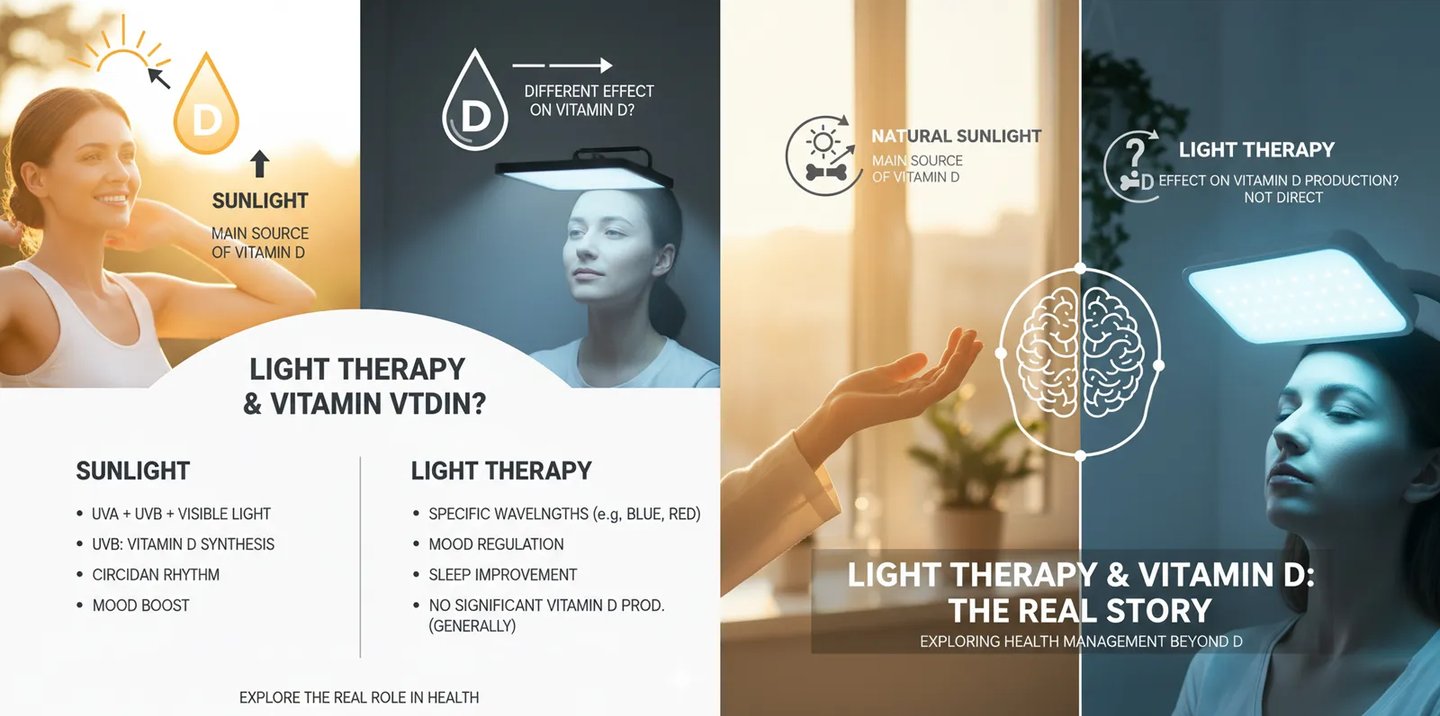Is Light Therapy Related to Vitamin D?
Light Therapy and Vitamin D are often mentioned together since sunlight is known as the main source of Vitamin D synthesis. However, light therapy is not the same as natural sunlight, and its effect on Vitamin D is different from what many people assume. In this article, we explore whether light therapy contributes to Vitamin D production and its real role in health management.
YEEQO
9/26/20251 min read


The Relationship Between Light Therapy and Vitamin D
1. The main sources of Vitamin D are:
Sunlight exposure: Ultraviolet B (UVB) rays trigger Vitamin D production in the skin.
Diet and supplements: Fish, egg yolks, fortified dairy products, and Vitamin D supplements.
2. The mechanism of action of phototherapy
Most light therapy devices use visible light (such as red, blue, and near-infrared light). These wavelengths mainly work on skin cells, mitochondria, and blood circulation. Light therapy can improve skin health, relieve mood disorders, and support better sleep. However, since it does not emit UVB light, it cannot directly stimulate Vitamin D production.
3. Why can't phototherapy replace sunlight for Vitamin D supplementation?
Light therapy devices are designed with safety in mind, avoiding harmful UV radiation.
They lack UVB wavelengths, which are essential for Vitamin D production.
People with Vitamin D deficiency still need dietary intake or supplements to meet their needs.
4. The Indirect Connection
While light therapy doesn’t directly produce Vitamin D, it can support health in indirect ways:
Improving mood and sleep → Encouraging a more active lifestyle and increasing time outdoors.
Boosting circulation and immunity → Complementing the health benefits of Vitamin D.
Light therapy and Vitamin D are related in an indirect way, but light therapy is not a direct source of Vitamin D. If your goal is to increase Vitamin D levels, the best approach is safe sun exposure, a balanced diet, and supplements when needed. Meanwhile, light therapy is best recognized for its role in mood regulation, sleep improvement, and skin health.
